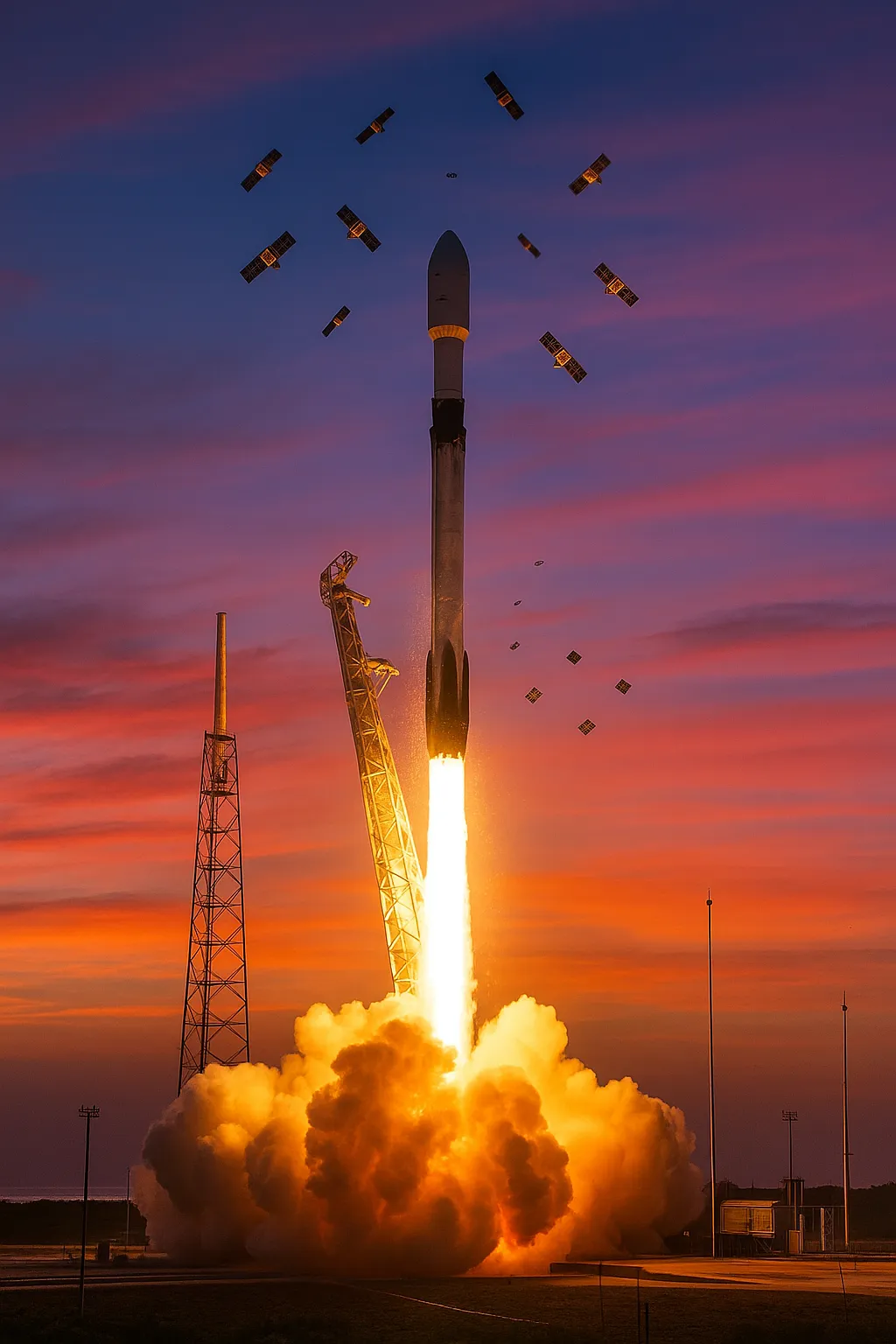SpaceX Falcon 9 Rockets 28 More Starlink Satellites into Orbit

Cape Canaveral, August 27, 2025 - Early Wednesday morning, SpaceX’s Falcon 9 booster B1095 thundered skyward from Space Launch Complex 40 at Cape Canaveral Space Force Station, carrying 28 new Starlink internet satellites into low Earth orbit. Liftoff occurred precisely at 7:10 a.m. EDT (11:10 UTC), marking the company’s 56th Starlink mission, designated Starlink 10-56.
The first stage booster, making its second flight, separated two minutes and forty seconds after launch and performed a pinpoint landing on the drone ship Just Read the Instructions stationed in the Atlantic Ocean. Meanwhile, the second stage continued to deploy the flat-pack satellites along a north-easterly trajectory over the Atlantic, completing all deployments approximately 90 minutes after liftoff.
This mission expands SpaceX’s megaconstellation, which now exceeds 7,200 operational satellites providing broadband connectivity to underserved regions worldwide. The rapid cadence of launches-averaging two per week this summer-underlines the company’s drive to achieve global coverage and enhance network capacity as demand for high-speed internet grows.
Analysts note that the Starlink network’s continuous expansion not only serves remote communities but also underpins critical communications for maritime, aviation, and government clients. As SpaceX fine-tunes its reuse of Falcon 9 boosters, each recovery reduces launch costs and accelerates deployment timelines, reinforcing the firm’s position at the forefront of commercial spaceflight.
Looking ahead, SpaceX plans to launch its next batch of Starlink satellites on August 29 from Vandenberg Space Force Base in California. Further out, the company is preparing for the inaugural crewed flight of its Crew Dragon rendezvous vehicle later this fall, a milestone toward NASA’s Commercial Crew goals.
Categories
Autos and vehicles Beauty and fashion Business and finance Climate Entertainment Food and drink Games Health Hobbies and leisure Jobs and education Law and government Other Politics Science Shopping Sports Technology Travel and transportationRecent Posts
Tags
Archives
08/19/2025 (3) 08/20/2025 (40) 08/21/2025 (27) 08/22/2025 (22) 08/23/2025 (4) 08/24/2025 (21) 08/25/2025 (30) 08/26/2025 (24) 08/27/2025 (29) 08/28/2025 (16) 08/29/2025 (9) 08/30/2025 (13) 08/31/2025 (17) 09/01/2025 (167) 09/02/2025 (124) 09/03/2025 (149) 09/04/2025 (112) 09/05/2025 (72) 09/06/2025 (169) 09/07/2025 (162) 09/08/2025 (150) 09/09/2025 (176) 09/10/2025 (194) 09/11/2025 (194) 09/12/2025 (186) 09/13/2025 (207) 09/14/2025 (159) 09/15/2025 (175) 09/16/2025 (198) 09/17/2025 (196) 09/18/2025 (196) 09/19/2025 (207) 09/20/2025 (129) 09/21/2025 (4)